The Best Sports Watches
Find the ultimate training partner with our run through of the best sports watches on the market
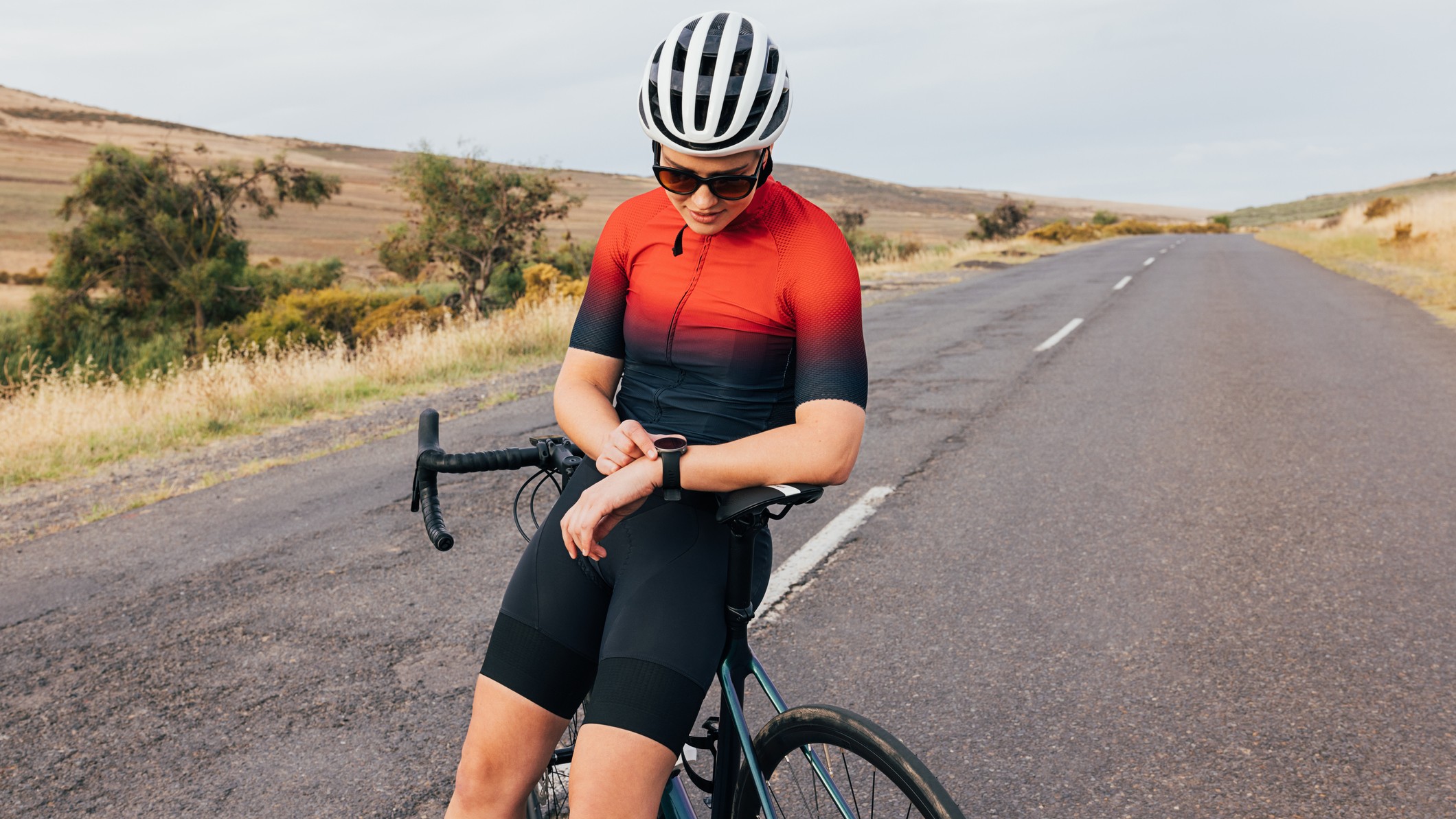
1. The list in brief ↴
2. Best overall: Garmin Forerunner 265
3. Best value: Coros Pace 3
4. Best smartwatch: Apple Watch Ultra 2
5. Best for runners: Garmin Forerunner 245
6. Best for swimmers: Garmin Swim 2
7. Best for beginners: Garmin Forerunner 55
8. Best no-expense-spared watch: Garmin Epix Pro 51mm
9. Best for battery life: Garmin Enduro 2
Whatever your preferred sport is, the right watch can enrich the experience. The best sports watches not only track your training in great detail, they also help you analyze it to make sure you are working in an effective manner to get fitter and faster.
I’ve reviewed a wide range of sports watches from Garmin, Polar, Coros, Suunto and Amazfit, along with the best fitness trackers and smartwatches from Fitbit, Apple, Samsung, Huawei and others. Based on that experience I’ve picked out my top sports watches across a number of categories. You’ll also find a buyer’s guide below to help get a better understanding of the core features of a sports watch.
How I Test Sports Watches
You can trust Coach
Over the past five years I have tested almost all the sports watches launched by Garmin, Coros, Polar and Suunto, as well as every generation of the Apple Watch and many other sporty smartwatches from brands like Samsung, Amazfit and Huawei. I test each watch I review for a minimum of two weeks and try to track a variety of sports in that time, though the bulk of my testing is done while running, since that is my main sport. I focus on GPS and heart rate accuracy, testing the latter against a chest strap, as well as evaluating them for comfort, ease of use, features like training analysis and music storage.
The Quick List
Here you’ll find the stand-out sports watches in the most popular categories, with a brief explanation of why they’ve been picked. Click on the watches to jump to more information in the buying guide below, where there are also other great options to check out.
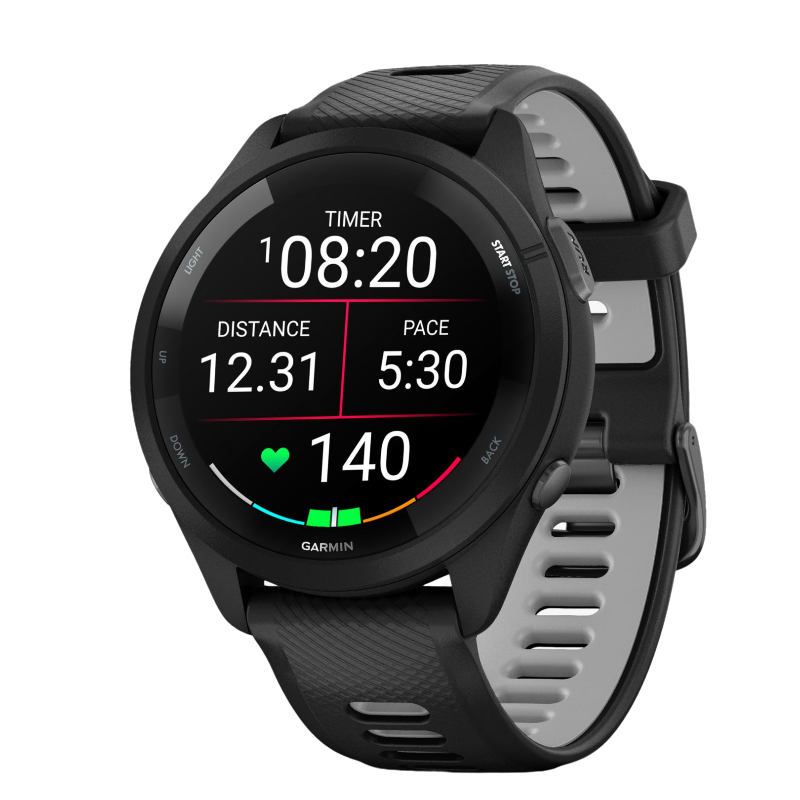
The Forerunner 265 is an attractive multisport watch with an AMOLED screen. It offers accurate multi-band GPS tracking, useful training analysis, music storage and breadcrumb navigation. Unless you’re spending big, it’s the best watch you can get.
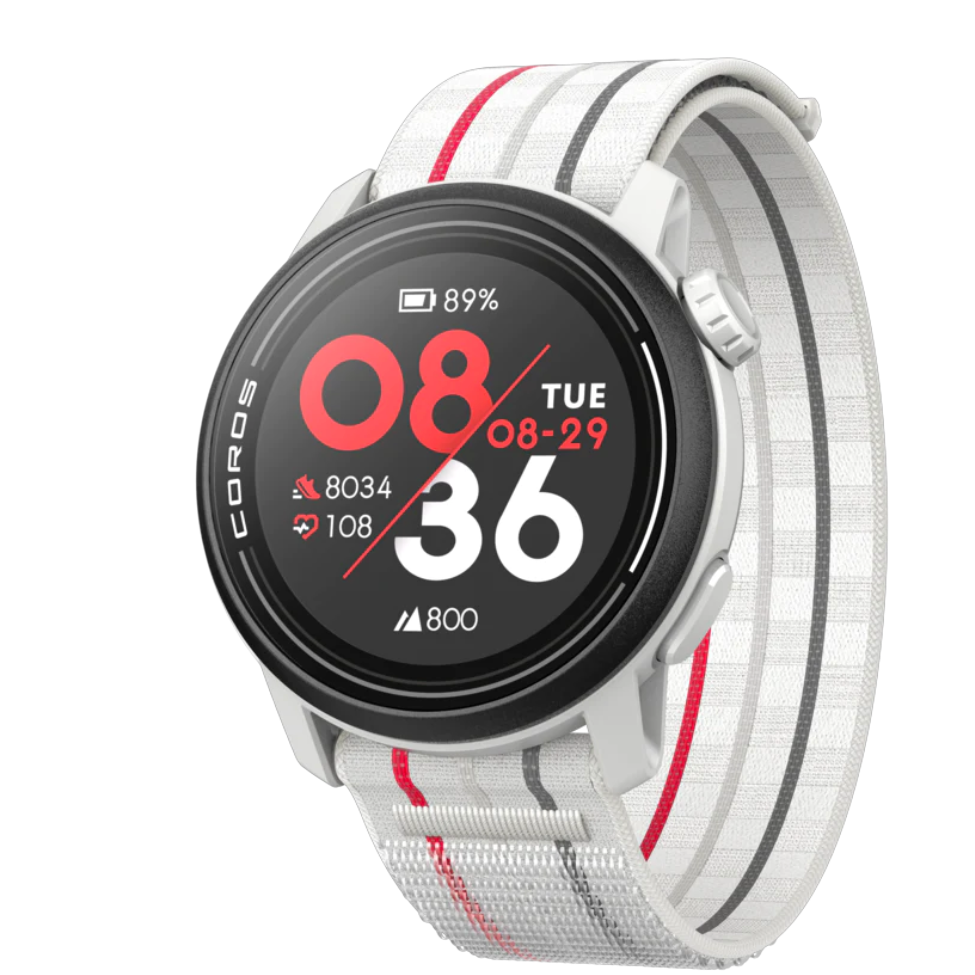
The Coros Pace 3 delivers way more than its price suggests thanks to its excellent array of features—in a lightweight multi-sport watch with long battery life. It has accurate GPS and HR tracking, useful training analysis and even music storage.
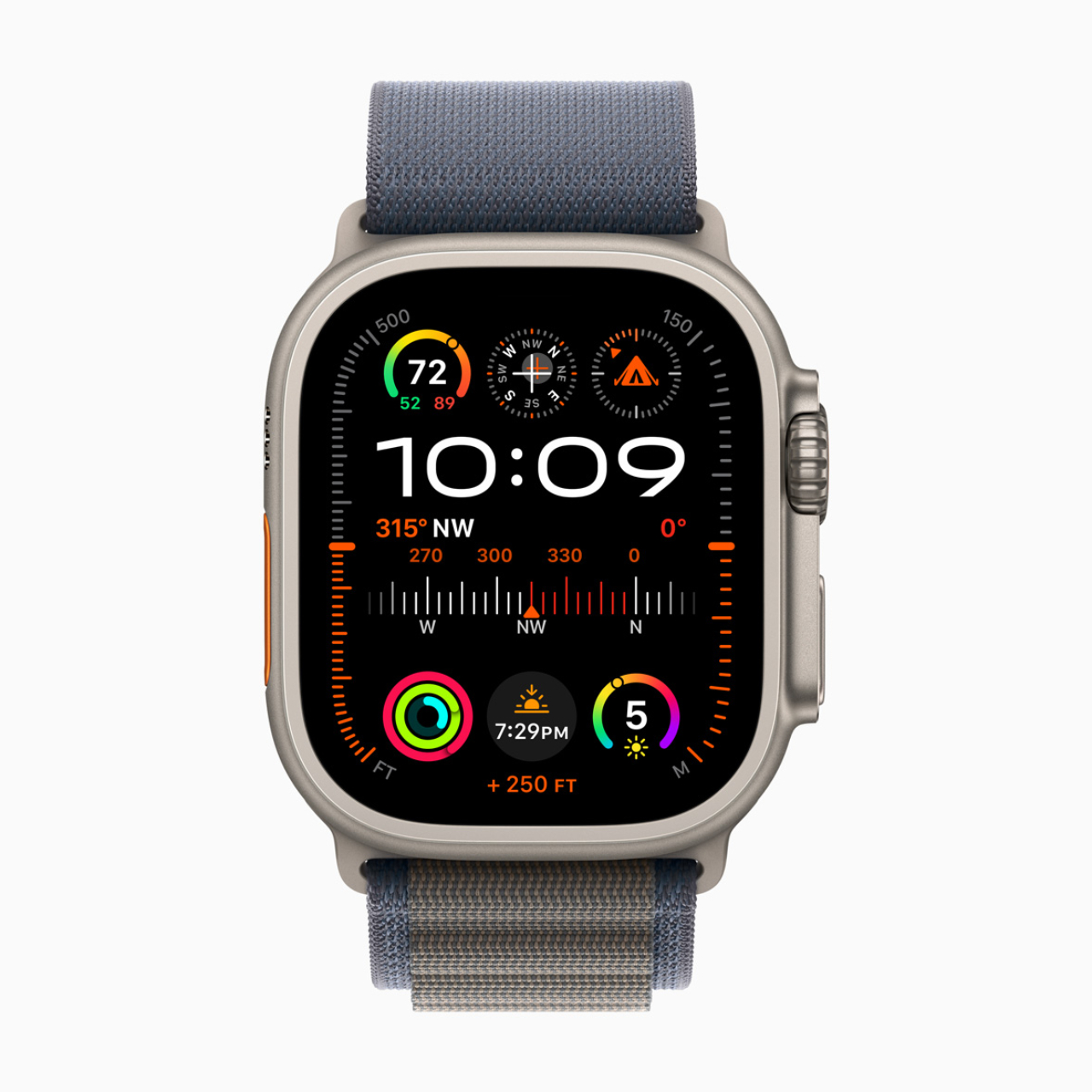
Faster and lighter than the Ultra, the Apple Watch Ultra 2 is now the best sporty smartwatch available. In comparison with the Apple Watch Series 9 you get updates like multi-band GPS, a lap button and longer battery life.
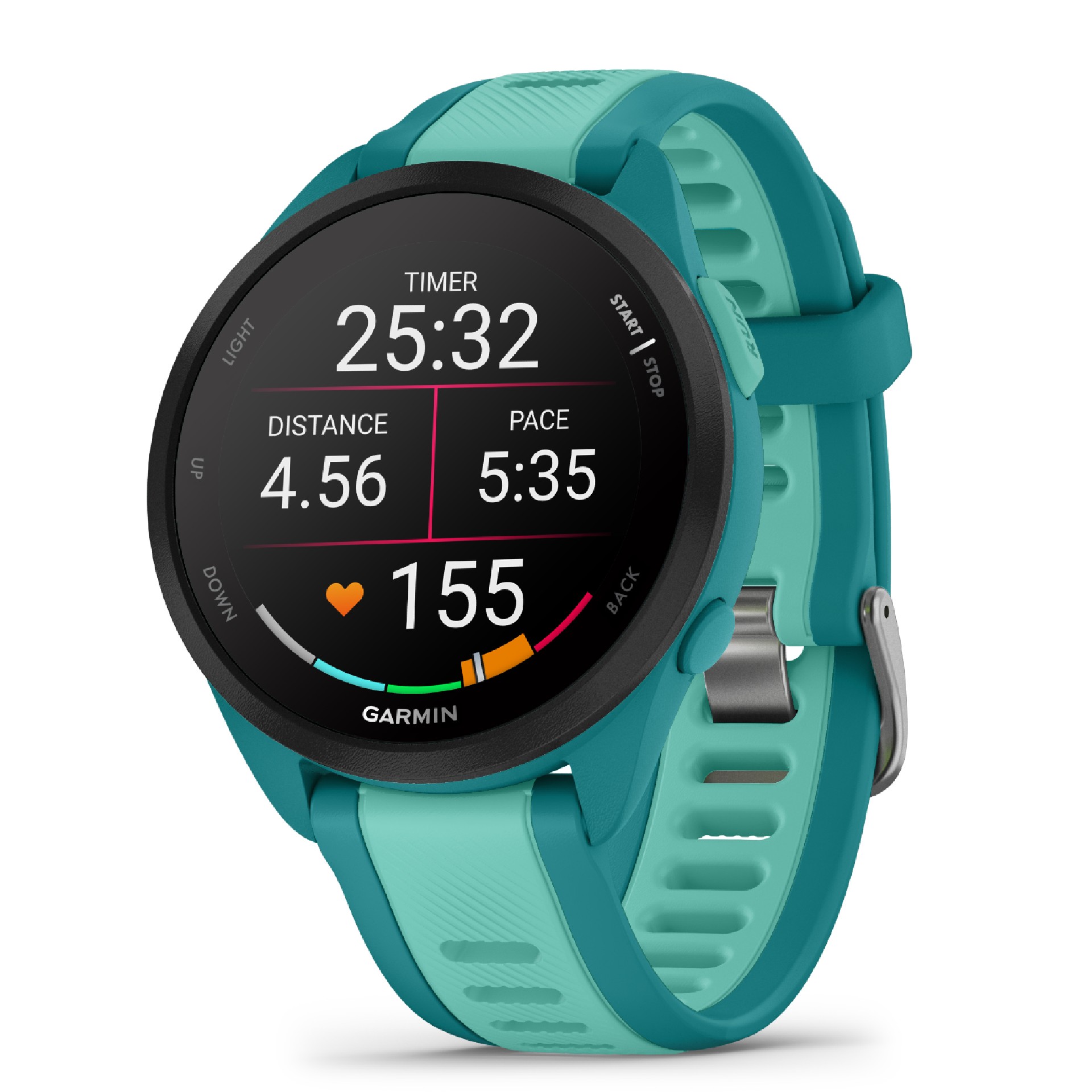
The Garmin Forerunner 165 Music is an excellent AMOLED watch that delivers accurate tracking for runners, along with extra features, such as breadcrumb navigation and music storage. The Forerunner 265 has more features and a triathlon mode, but the 165 is much cheaper.
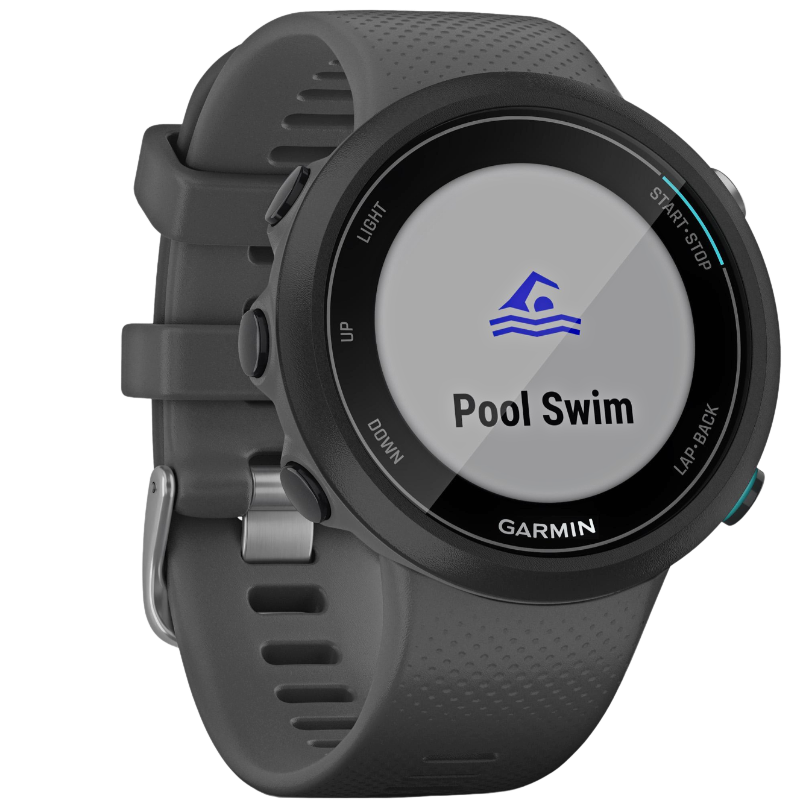
All of Garmin’s top watches offer excellent swim tracking features, but if you’re looking for a cheaper watch to track aquatic activities the Swim 2 is the one to get. It tracks pool and open-water swimming and is light and comfortable to wear.
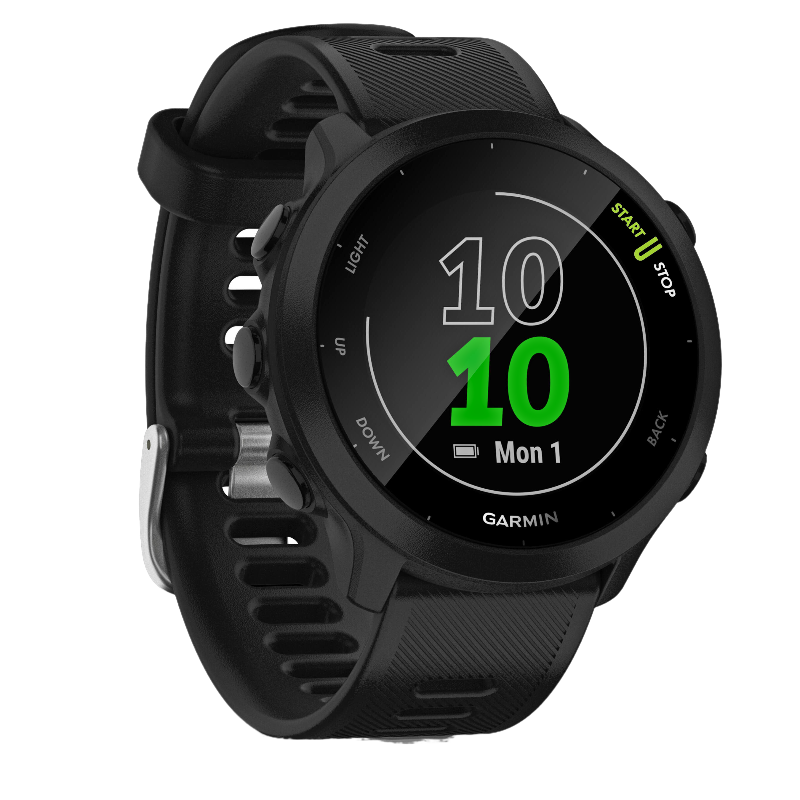
Garmin’s entry-level Forerunner is good value and ideal for beginners because of its guided training plans and daily suggested workouts, which can help you get into the swing of regular workouts in a safe and effective way.
Load the next 6 products ↴
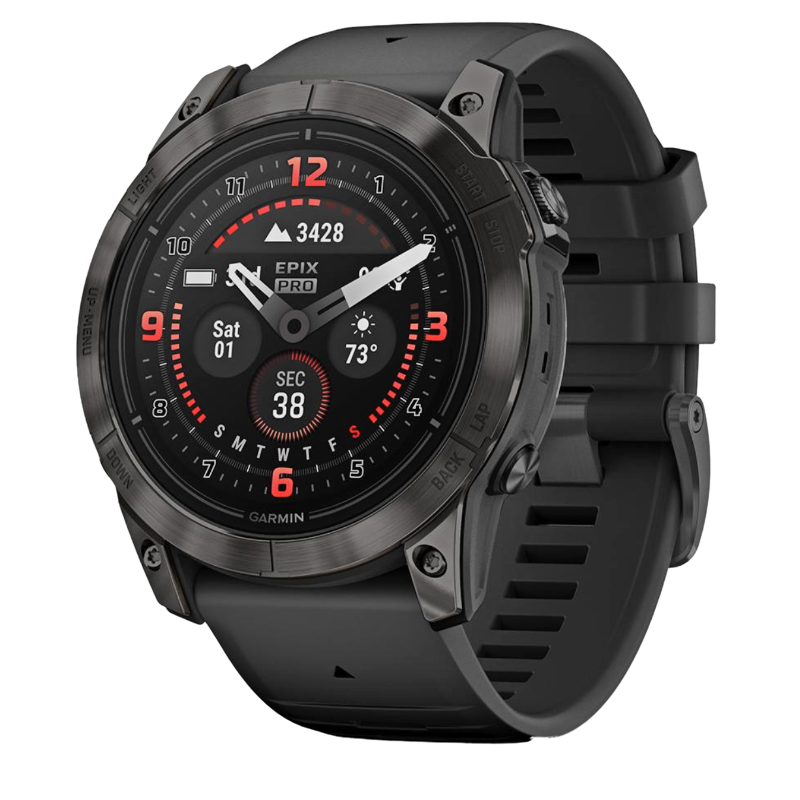
The largest model of the Epix Pro has everything, including the unique combination of bright AMOLED display and long battery life—it lasts 10 days on a charge even with the screen set to always-on. All Garmin’s best sports, smarts and navigation features are on board.
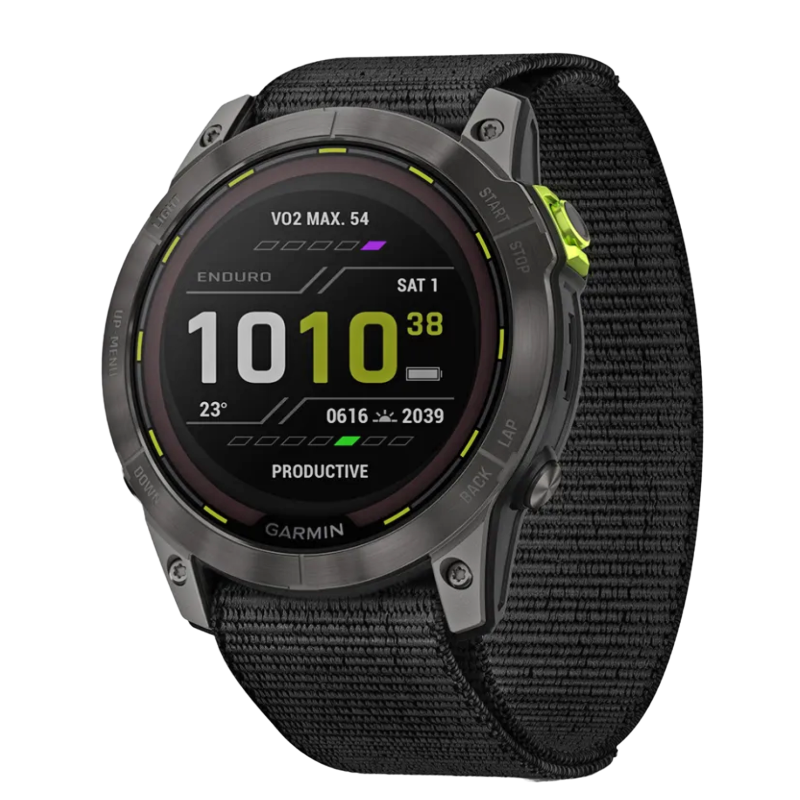
The Enduro 2 is all about battery life, and even with heavy use it will last a few weeks between charges. It packs in all Garmin’s best features too, so you’re not sacrificing anything to get that monster battery life.
The Best Sports Watches
Best Overall
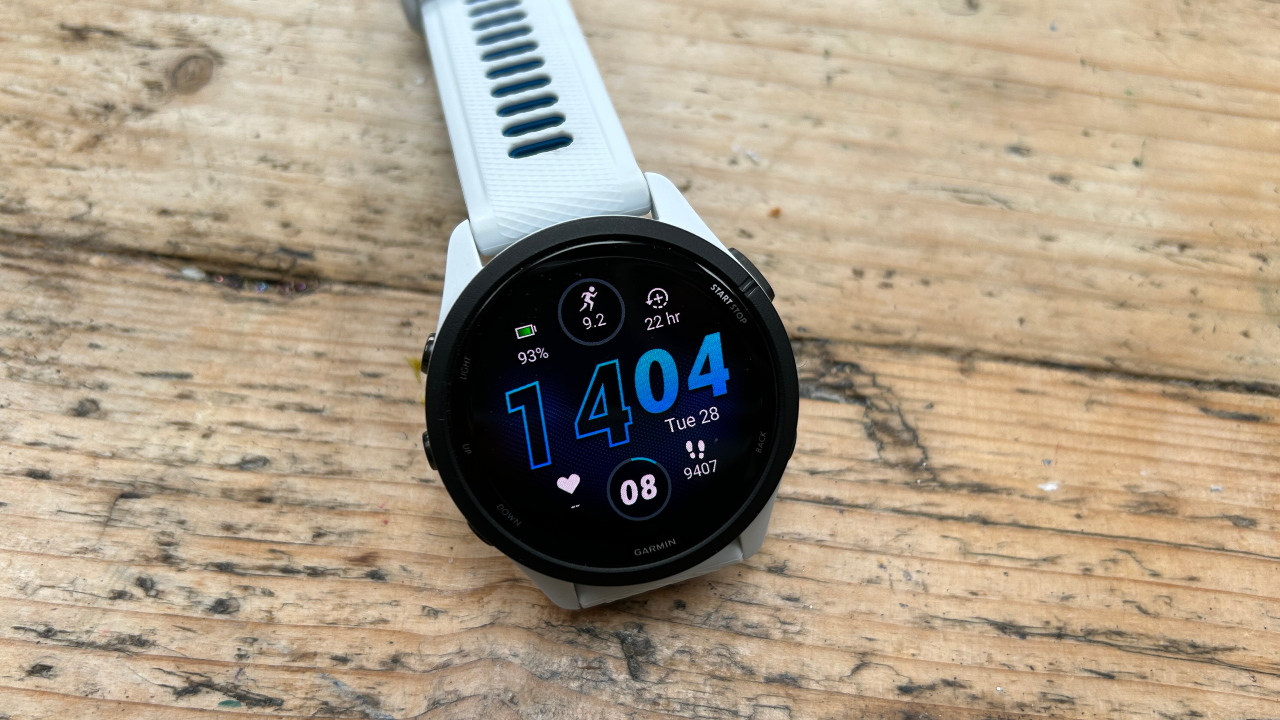
Specifications
Reasons to buy
Reasons to avoid
The Forerunner 265 is a multi-sport watch that packs in almost all the best features Garmin offers while being cheaper, smaller and lighter than the likes of the Epix 2 and Fenix 7. It has a bright AMOLED display that doesn’t kill the battery life—during testing it lasted me four or more days with the always-on screen enabled, even when running around 7.5 miles a day—plus multi-band GPS for accurate outdoor tracking.
It also has Garmin’s training readiness feature, which is a notable omission from the Forerunner 255 and one of the best examples of training analysis from any brand. Readiness gives a color-coded score out of 100 showing how ready to train you are, based on factors like your recent training, stress and sleep.
If you upgrade to one of Garmin’s top watches you get color maps plus longer battery life, and more rugged, metal designs, but for the most part the Forerunner 265 ticks every box you could want in a sports watch. And if you’re not fussed about the AMOLED display or training readiness, then the Forerunner 255 is a cheaper alternative that has every other feature of the 265.
Read more in my Garmin Forerunner 265 review
Best Value
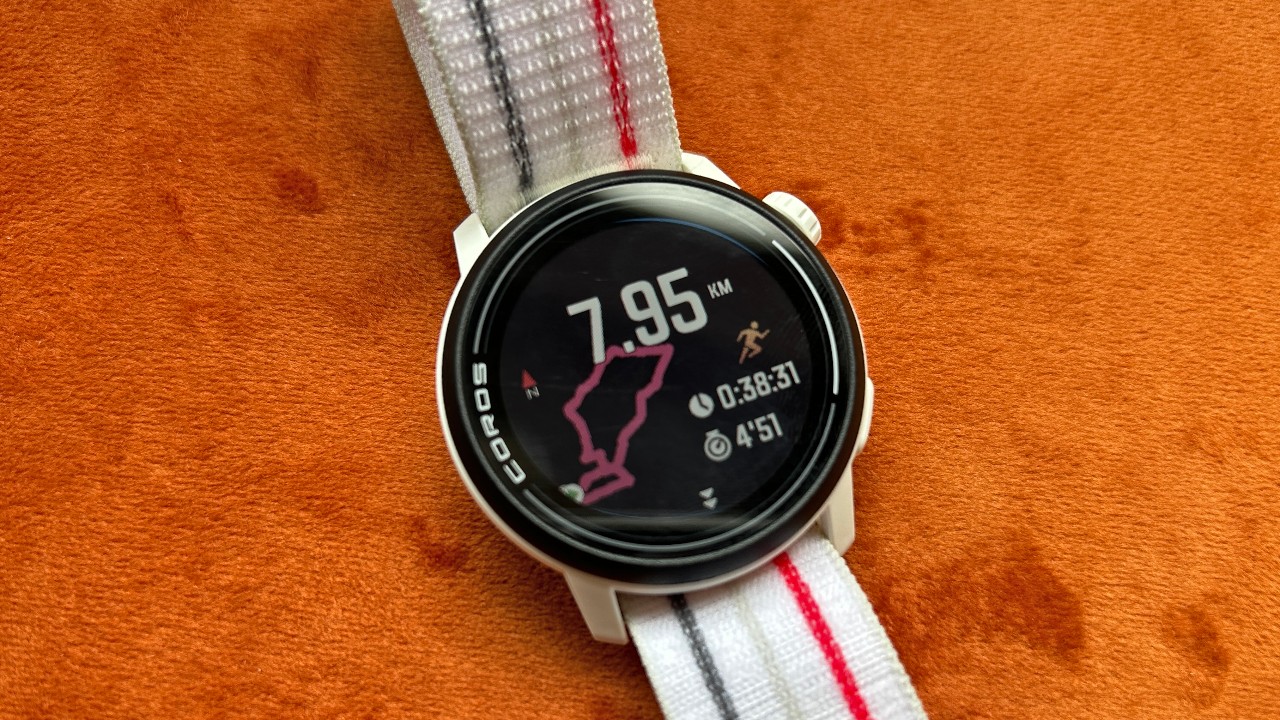
Specifications
Reasons to buy
Reasons to avoid
The Coros Pace 3 steals the best value crown from its predecessor, the Coros Pace 2, even though the watch has risen in price a little. For the extra outlay, you get several useful updates, including more accurate multi-band GPS and a new-and-improved heart rate monitor, as well as music storage and a small increase in battery life. It’s a multisport watch that rivals the features and performance of devices that cost hundreds more, and there’s nothing as capable as the Pace 3 at its price.
Some won’t like the all-plastic build of the Pace 3 compared to watches with metal bezels, but it means that the Pace 3 is lightweight and comfortable to wear, and it’s amazing how much Coros has packed into such a small watch. Unless you want some of the top-tier features you get on more expensive watches, like AMOLED screens or maps, the Pace 3 will cover everything you need and more.
Read more in my Coros Pace 3 review
Best Smartwatch
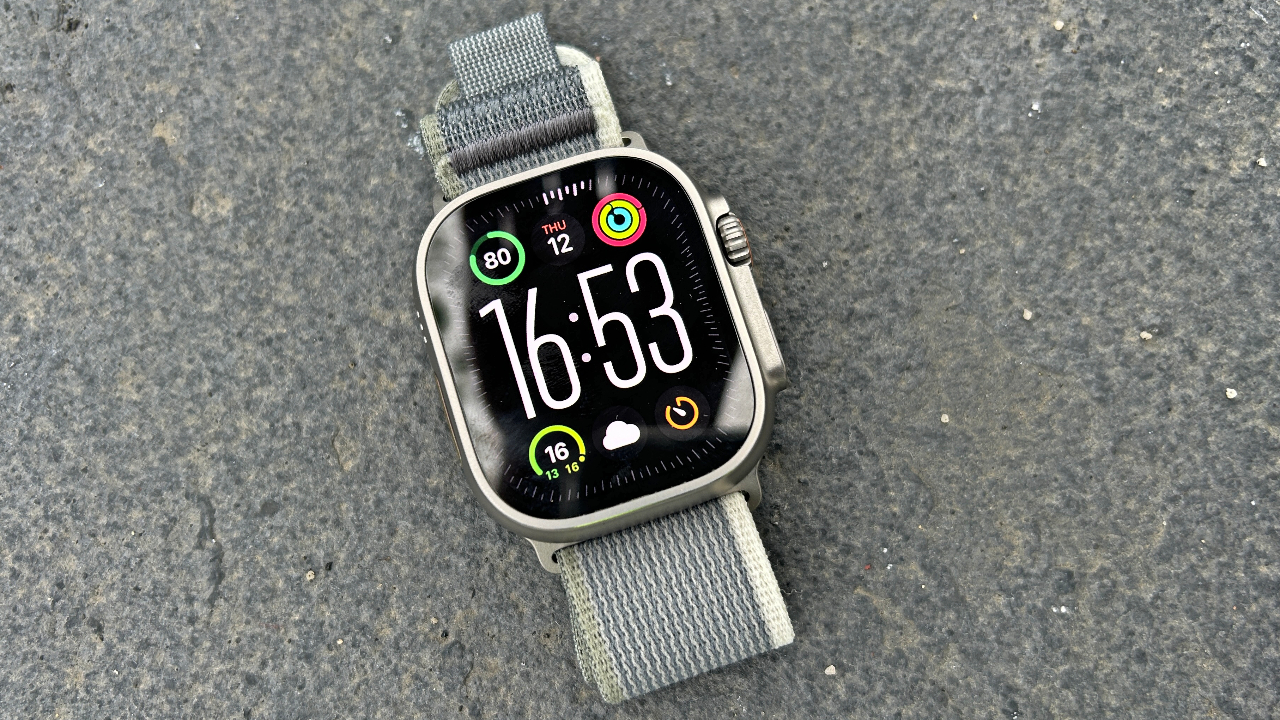
Specifications
Reasons to buy
Reasons to avoid
The original Ultra established itself as the best sporty smartwatch available, with upgrades on the standard Apple Watch including a more rugged design, an extra button used to take laps, double the battery life and more accurate multi-band GPS. The Apple Watch Ultra 2 is not a huge update, but it does have a brighter screen, a faster processor and the new Double Tap gesture control, which allows you to control some watch features by tapping your index finger and thumb together.
You don’t get the battery life of a sports watch—nor the training analysis and navigation features—but otherwise the Apple Watch Ultra 2 matches up well with the best trackers, while being smarter and more useful to wear outside of workouts. The Apple Watch Series 9 is also a good sports watch, but it lacks some of the Ultra 2’s important sports features.
Read more in my Apple Watch Ultra 2 review
Best For Runners
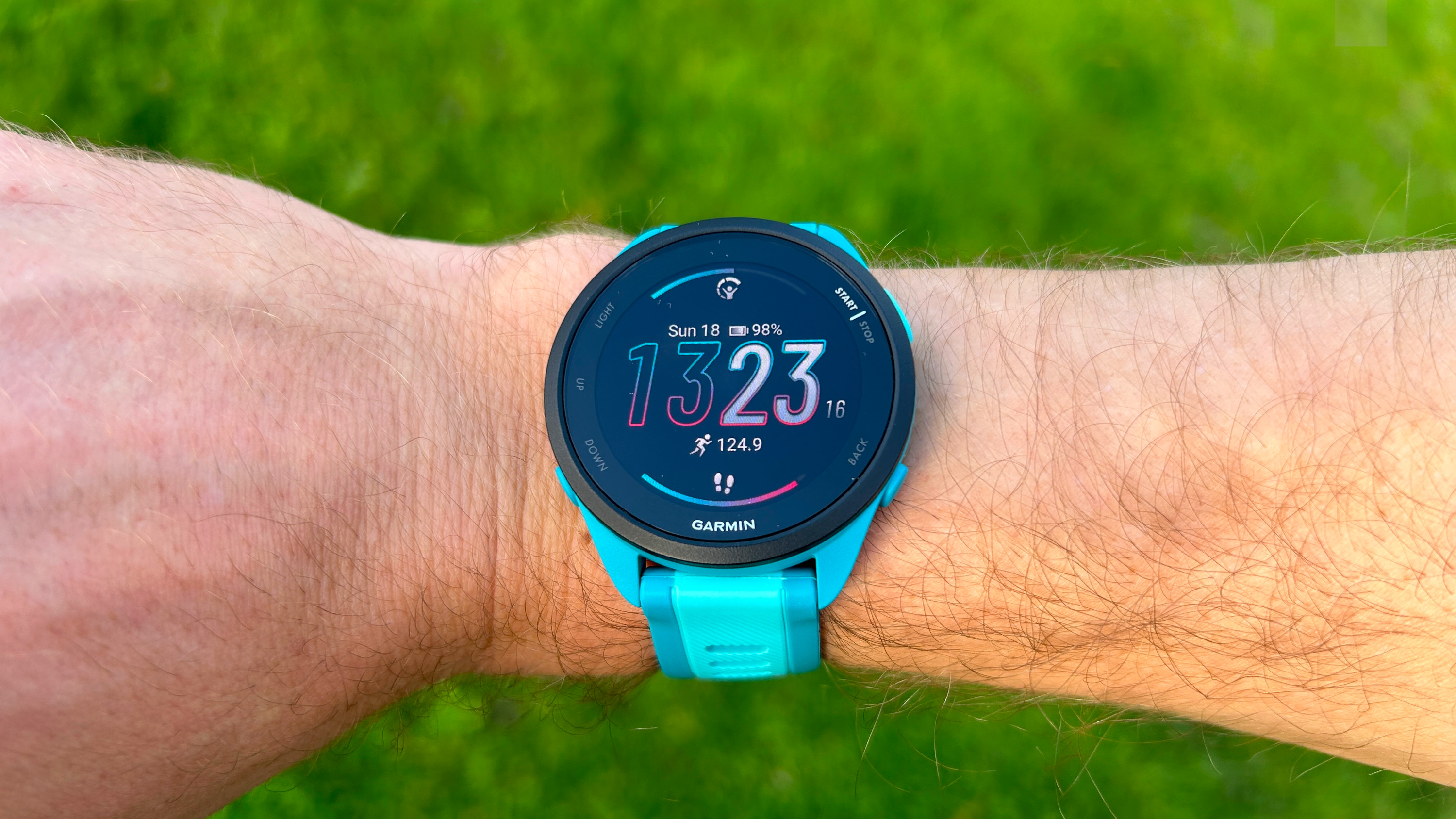
Specifications
Reasons to buy
Reasons to avoid
The Garmin Forerunner 165 is the entry-level AMOLED sports watch in Garmin’s range. It’s mainly targeted at runners as it doesn’t have a multisport mode or support cycling power meters. I found it to be an accurate and impressive running watch. It nails the basics of sports tracking (aside from the poor HR accuracy common across all watches, in my experience) and adds useful features like breadcrumb navigation and music storage—if you opt for the Forerunner 165 Music.
Along with the lack of a multisport mode, the Forerunner 165 also loses a few other features you get on the more expensive Forerunner 265, including dual-band GPS tracking and Garmin’s training readiness score. These are useful, though the Forerunner 165 is a lot cheaper than the 265. I’d say most runners will find the 165 a better-value option.
Read more in my Garmin Forerunner 165 review
Best For Swimmers
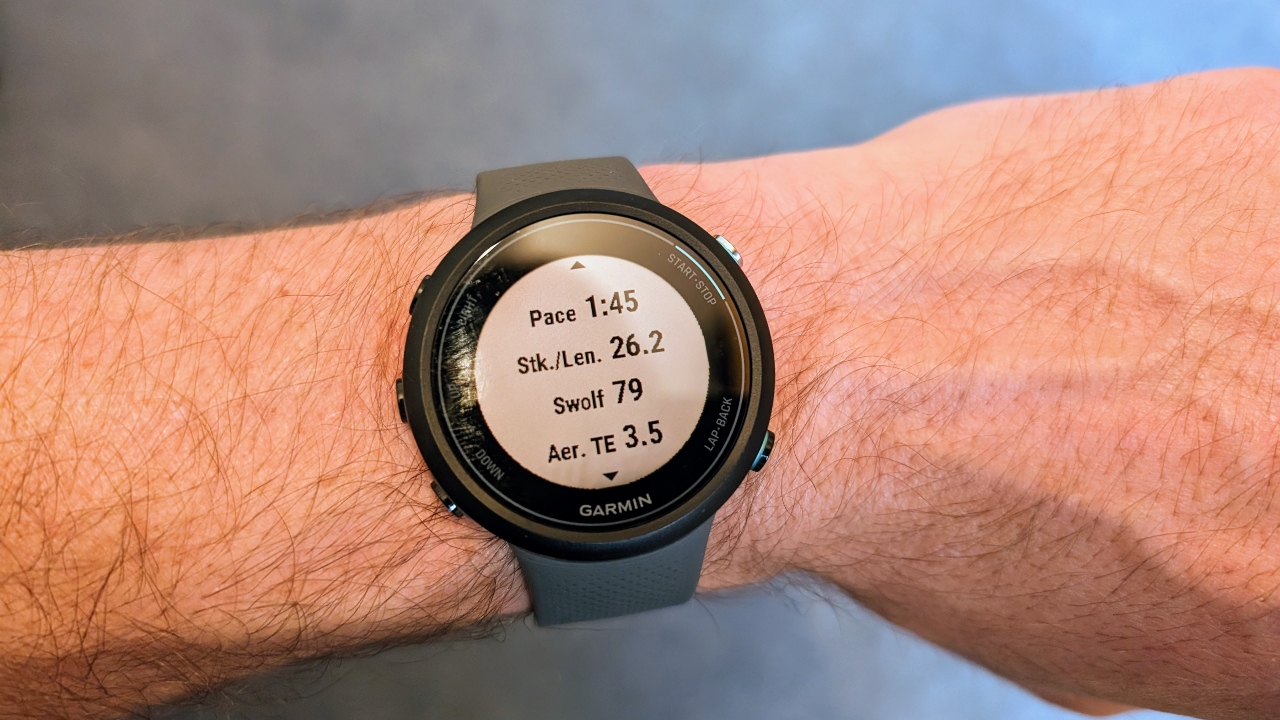
Specifications
Reasons to buy
Reasons to avoid
The Swim 2 is the top pick in our round-up of the best swimming watches, and offers the most affordable way to get Garmin’s excellent swim tracking. If you are a triathlete or do any other activities alongside swimming, there is more value to be had in buying a more comprehensive multisport watch like the Garmin Forerunner 255 or Coros Pace 3, which also have great swim tracking (the 255 has identical swim tracking), but the Swim 2 is often in sales and is a cheaper dedicated device for swimmers.
As you would expect, the Swim 2 tracks both pool and open-water swimming, recording a wide array of stats including SWOLF, stroke type and stroke count. You can also set up workouts to follow in the water, and it’s very light and comfortable to wear.
Read more in our Garmin Swim 2 review
Best For Beginners

Specifications
Reasons to buy
Reasons to avoid
The Forerunner 55 is Garmin’s entry-level running watch and it’s a great pick for beginner runners thanks to the suggested workouts and user-friendly training analysis it offers to help you get fitter. Runners of all levels could actually happily use the Forerunner 55 to track all their training, but I did miss some features from more expensive watches, like breadcrumb navigation and more detailed training analysis.
There is no multisport mode on the watch, but it tracks pretty much every popular activity individually aside from open-water swimming. If you are starting out on your sporting journey and have triathlons in mind, the Coros Pace 2 would be a better pick.
Read more in my Garmin Forerunner 55 review
Best No-Expense-Spared Watch
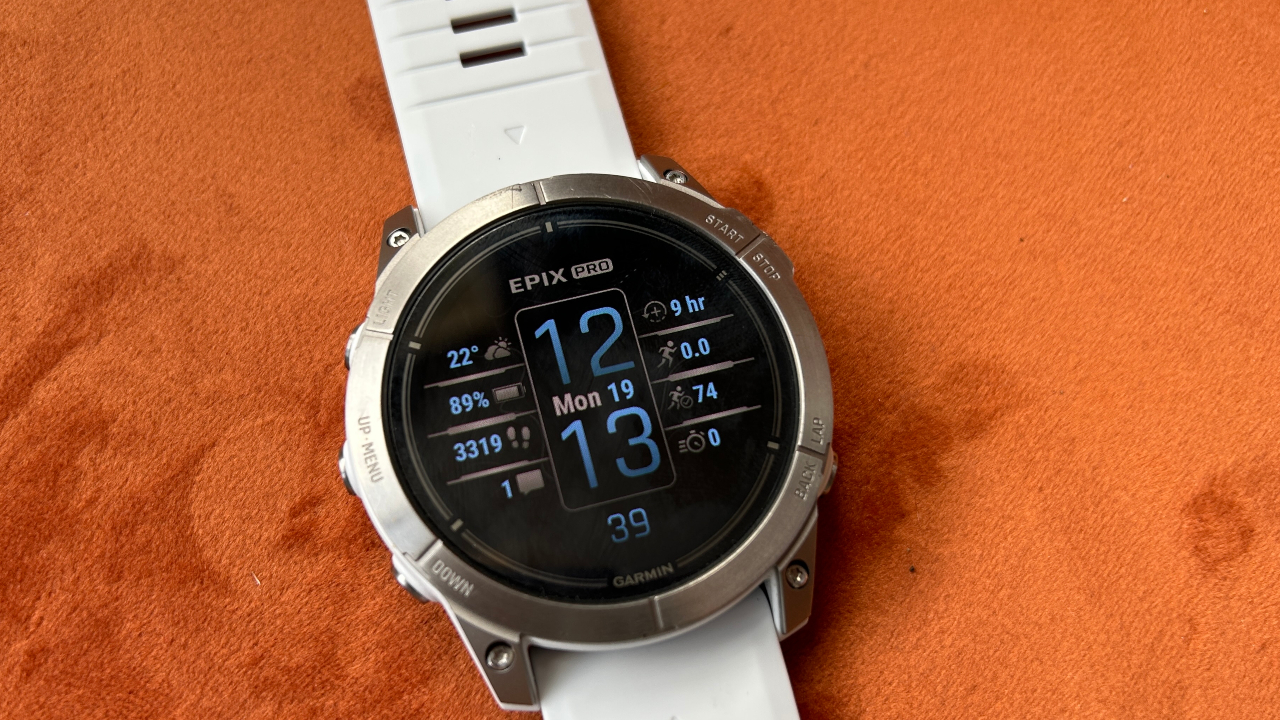
Specifications
Reasons to buy
Reasons to avoid
The Garmin Epix Pro range doesn’t offer a huge upgrade on the Garmin Epix 2. The new software features on the Pro watches are coming to the Epix 2 too, and the new hardware features, like an upgraded heart monitor and flashlight, are handy rather than essential.
However, the Epix Pro’s 51mm model is a big step up because it offers sensational battery life for an AMOLED watch packed with all Garmin’s best features. Even with the screen in always-on mode and tracking outdoor activities almost every day, it lasted me more than 10 days.
If you turn the screen to raise-to-wake outside of your workouts you’ll go weeks without charging. That’s unprecedented for an AMOLED sports watch, and makes opting for the bright screen over the duller transflective display on the Fenix 7 Pro an easier decision.
That said, you pay more for the Epix Pro 51mm watch than the 42mm and 47mm devices, and it’s larger on the wrist too. I swapped in a nylon band to make it feel lighter because the silicone band it comes with makes the Epix Pro pretty hefty. If money truly is no object, opt for the titanium version of the watch to reduce weight.
Read more in my Garmin Epix Pro review
Best For Battery Life
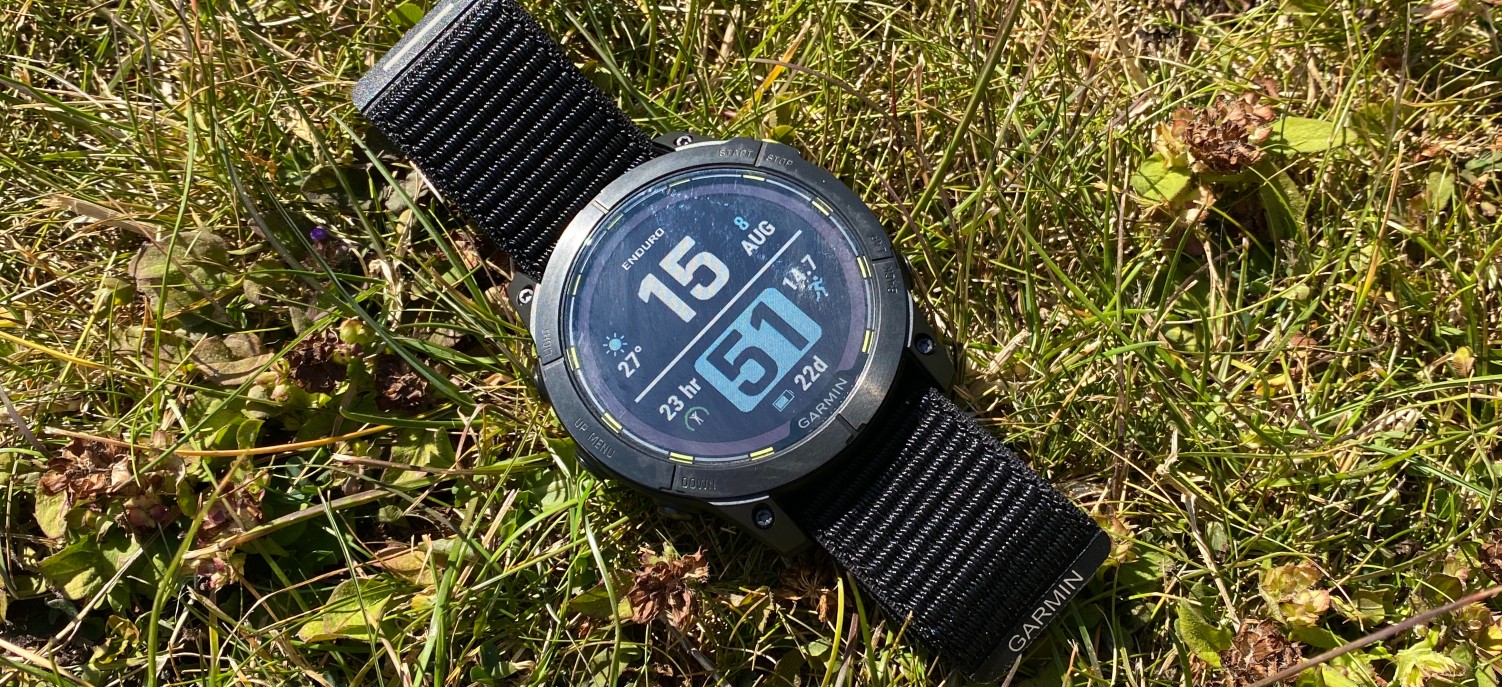
Specifications
Reasons to buy
Reasons to avoid
If the idea of going weeks, or even a month, without charging your watch thrills you—and without sacrificing any of the top features available on Garmin sports watches—then the Enduro 2 is for you. With heavy use, running 60 miles (100km) a week, it lasted me 16 days on a charge. When training a little less and using a sleep mode to save battery at night, the Enduro 2 comfortably lasted more than three weeks.
The battery only gets better if you live in a sunny place and take full advantage of the solar panels on the watch. The Enduro 2 will last up to 46 days in watch mode in sunny conditions and offers 150 hours of GPS tracking in the sun. Even if you ramp up the accuracy using multi-band GPS you get up to 81 hours of tracking in the sun.
It’s a large watch—though it feels reasonably light on the wrist if you use a nylon strap—and costs more than most, even within Garmin’s range of expensive devices, but the Enduro 2’s battery will make it the stand-out pick for those logging a lot of multisport training.
Read more in my Garmin Epix Pro 2 review
More Tried-And-Tested Recommendations
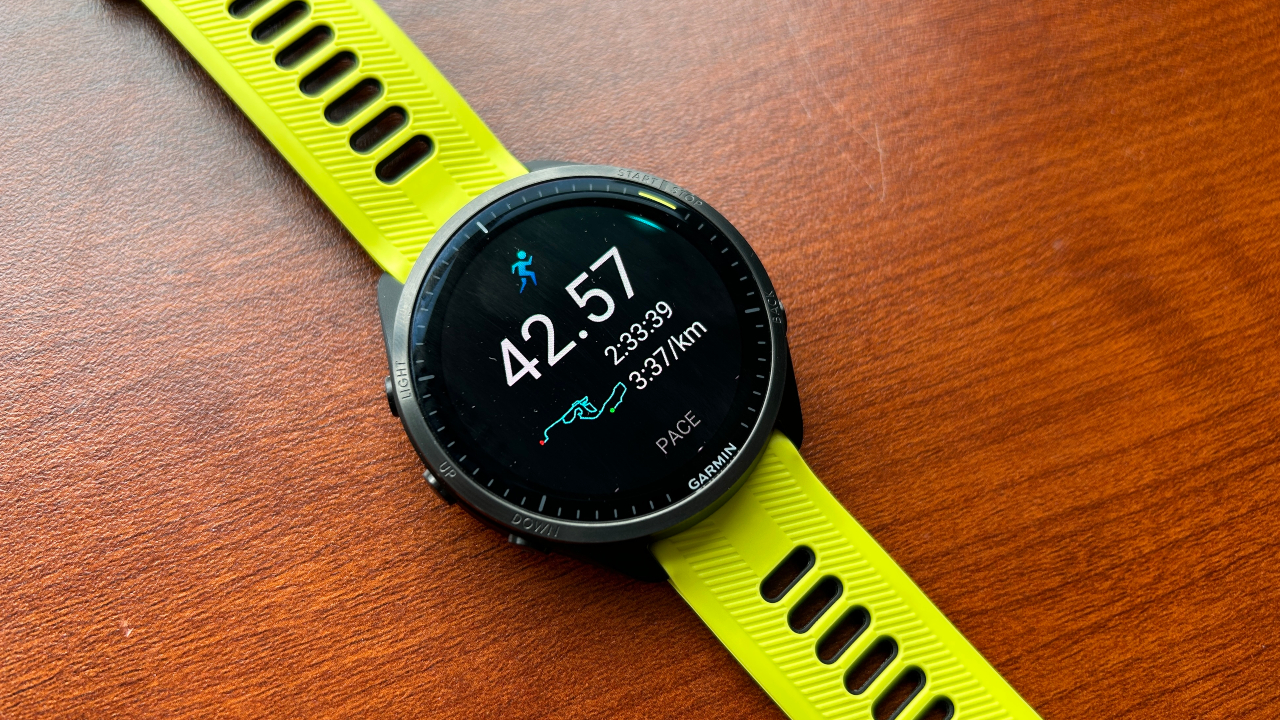
Specifications
Reasons to buy
Reasons to avoid
The Forerunner 965 is the best watch in Garmin’s range, providing all the company’s best features, including color maps, in a lightweight design with a bright AMOLED touchscreen. It delivers excellent GPS accuracy and useful training analysis, and the battery life is better than you might expect given the AMOLED display: The 965 lasted me seven days, even with the always-on screen enabled.
Though the design and battery life are better on the 965 than on the 265, the main reason to upgrade is maps and navigation features like ClimbPro, which show all the climbs and descents you have to tackle on your route. If you won’t use those maps much the Forerunner 265 is better value, but if cost is less of an issue then the Forerunner 965 is as good as it gets—unless you need the longer battery life available on Garmins with LCD screens, like the Fenix 7 or Enduro 2.
If you want maps and aren’t bothered by the AMOLED screen, look into the older Forerunner 955, which is regularly in sales for less than the new watch. The 955 has the same great tracking, training analysis and navigation features as the 965, with an LCD screen that’s not as vibrant as AMOLED, though it allows for more battery life.
Read more in my Garmin Forerunner 965 review
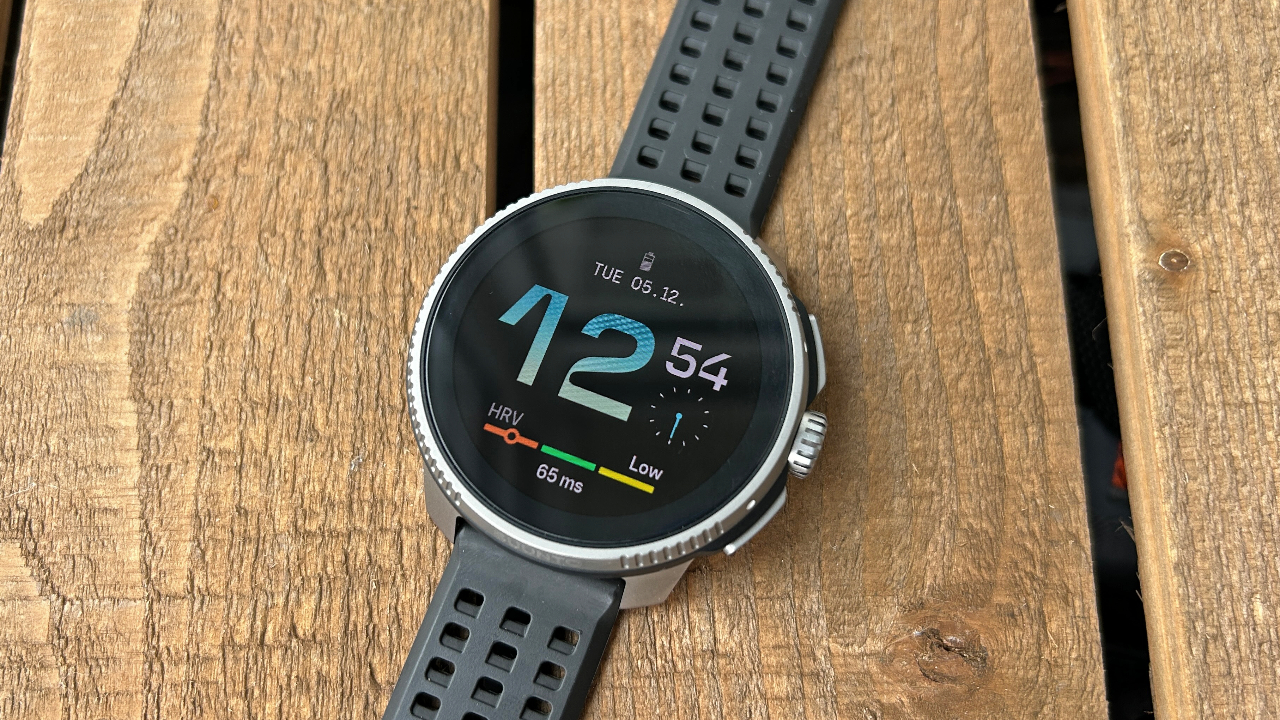
Specifications
Reasons to buy
Reasons to avoid
The Suunto Race is an excellent sports watch and great value given the features and build quality you get for your money. It has an AMOLED display and a sapphire crystal screen, with a steel bezel on the standard watch and titanium if you spend $549/£479, which is still good value for a titanium sports watch.
You also get color maps, accurate multi-band GPS and impressive battery life for an AMOLED watch—in my test, the Race lasted seven days in always-on mode when used for running almost every day. In my experience the heart rate accuracy is poor, so you’ll want to pair an external sensor with the Race. However, on most fronts it offers a compelling alternative to the Garmin Forerunner 965 and Epix watches at a lower price.
Read more in my Suunto Race review
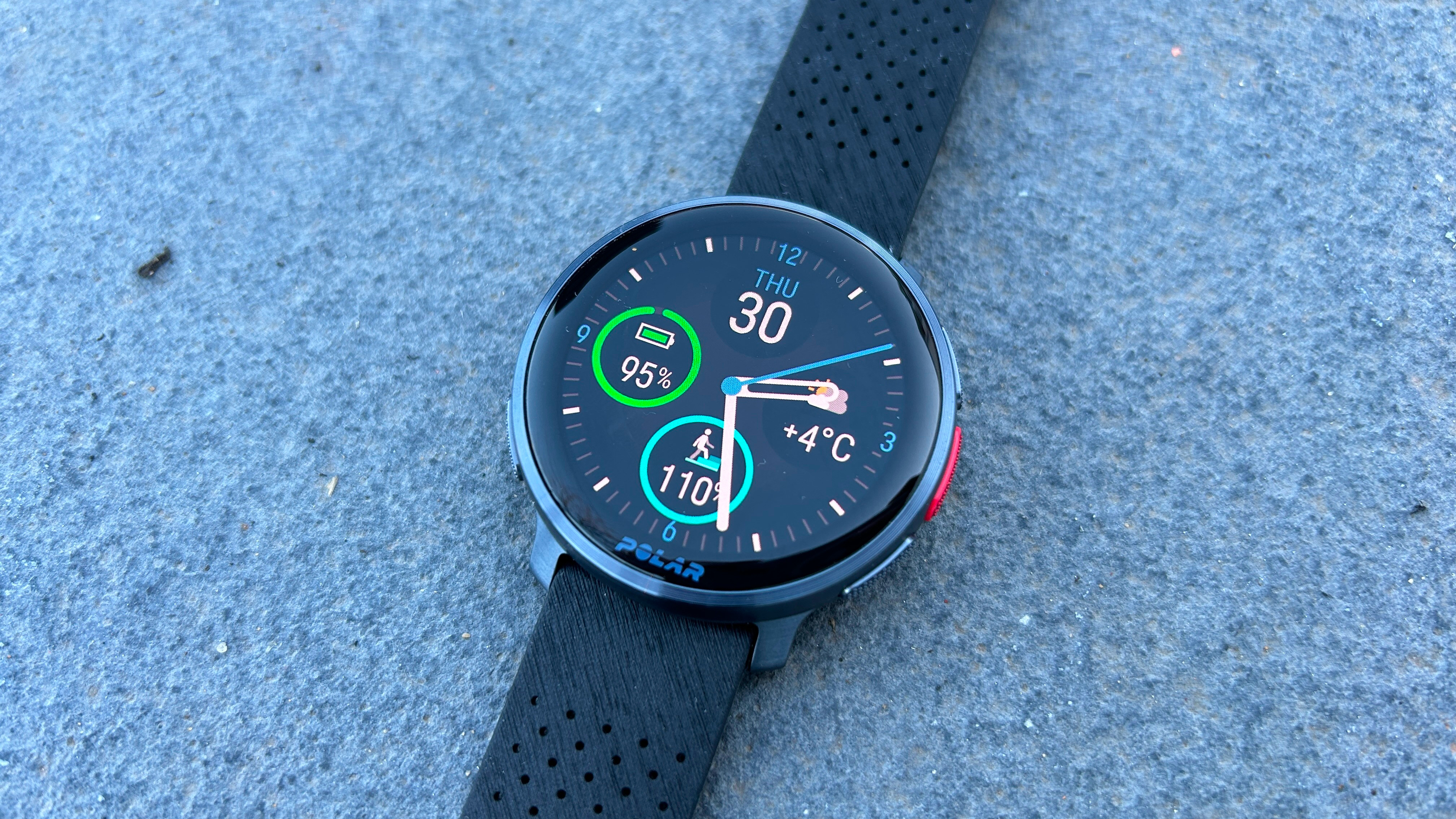
Specifications
Reasons to buy
Reasons to avoid
The Vantage V3 is the best Polar watch to date. There are notable upgrades on previous models, including the AMOLED display, maps and multi-band GPS, which I didn’t find as accurate as the multi-band on Garmin and Suunto watches but which is still impressive. The Vantage V3 has an attractive lightweight design and offers detailed sleep and recovery tracking.
For all its qualities, however, I still think the Garmin Forerunner 965 and Suunto Race are better AMOLED sports watches and they are around the same price, or cheaper, which makes the Vantage V3 hard to recommend outright. If you like Polar’s set-up and training analysis and want a Polar watch, though, it’s undoubtedly the best you can get.
Read more in my Polar Vantage V3 review
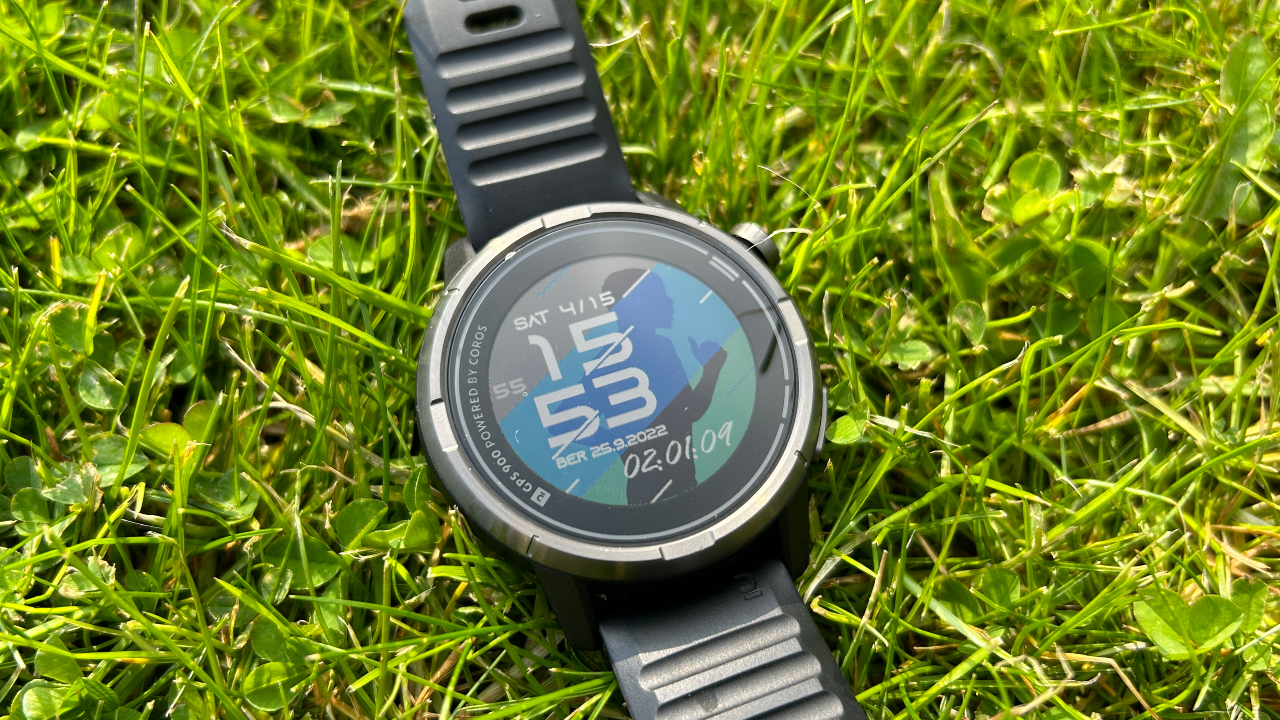
Specifications
Reasons to buy
Reasons to avoid
The Kiprun GPS 900 shares a lot of characteristics with the excellent Coros Pace 2, which is not surprising when you consider the GPS 900 is built on the platform of the original Coros Apex watch, and uses Coros’s software and app. It’s a full multisport watch with long-lasting battery life, breadcrumb navigation and useful training analysis.
It’s more expensive than the Coros Pace 2 and delivers the same sports tracking experience, but in a more attractive watch thanks to its metal bezel. Some may prefer the lighter, all-plastic Coros Pace 2, but the Kiprun GPS 900 is better suited for wearing outside of your workouts.
Read more in my Decathlon Kiprun GPS 900 review
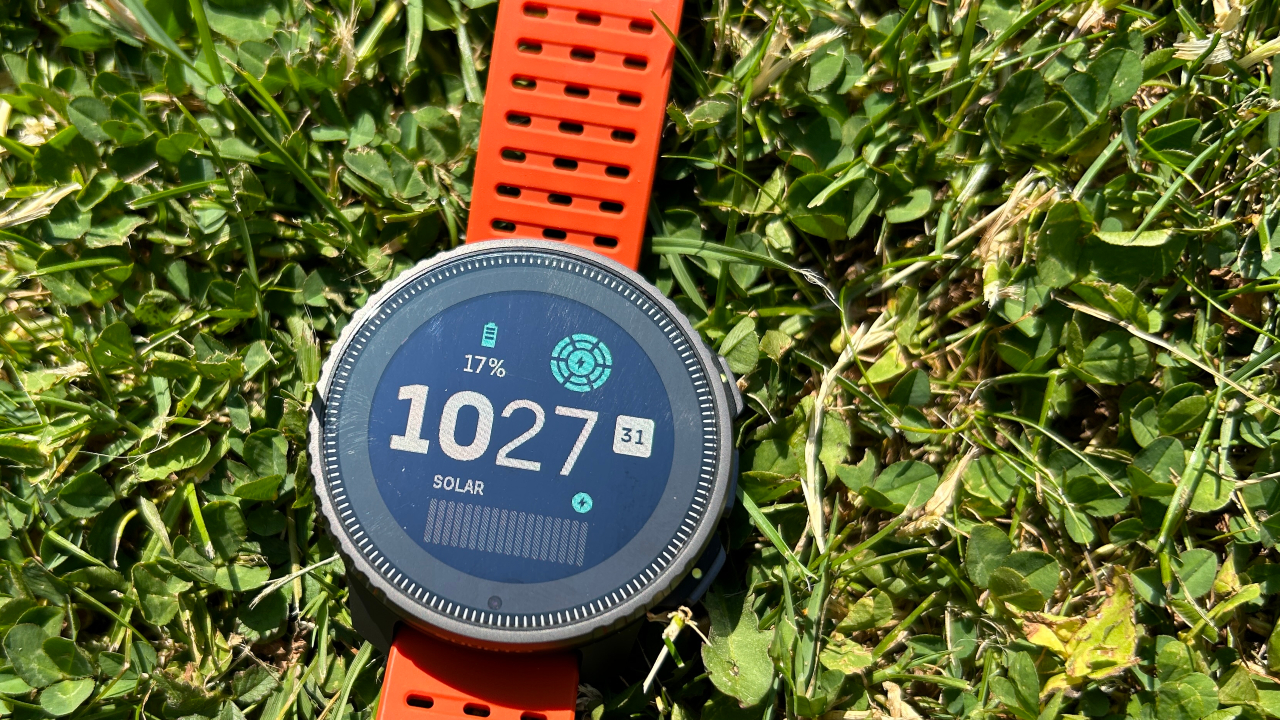
Specifications
Reasons to buy
Reasons to avoid
The Vertical is the best watch that Suunto has made in years, with a number of important upgrades that make it competitive with the best devices from Garmin, Coros and Polar. Star features include the long battery life: The Vertical lasts 60 hours in the most accurate tracking mode that uses multi-band GPS, which I found to be highly accurate.
There is a solar version of the watch that has an even longer battery life in sunny conditions. Turn the 24/7 heart rate monitoring off and the Vertical can last a year in watch mode.
Suunto’s useful maps feature means you can pick the areas you want to download to the watch. These color maps are bright and easy to see on the watch in all conditions, and great for following routes.
Navigating the Vertical’s user interface is done via a three-button set-up and the touchscreen, and in general it’s more laggy and frustrating than Garmin’s with five buttons. The Vertical still falls short of Garmin’s top watches, especially with regard to smart features like music storage, but it’s an appealing alternative to the Fenix 7 and Enduro 2 watches if you are shopping outside of Garmin’s range.
Read more in my Suunto Vertical review
Sports Watch Buying Advice
All the best sport watches featured above have a few features I consider essential, including built-in GPS for accurate outdoor tracking, an optical heart rate monitor to record your heart rate during activities, and a display that’s easy to read in all conditions.
Looking beyond these core features, there are many others found on sports watches that can make them stand out from the crowd. Here are the features to look out for.
Battery life: Some sports watches last several weeks on a charge even when tracking activities every day, and some higher-end models from Garmin even have solar panels to extend their life further. At the other end of the scale, sporty smartwatches will tend to last just a day or two.
Bluetooth/ANT+ sensor support: While the best sports watches have lots of sensors on board to track your training, you may want to connect external sensors like footpods, cycling power meters and chest strap heart rate monitors to get the most accurate and useful data. It’s worth checking what type of external sensors are supported on your watch.
Maps and navigation tools: Many sports watches offer breadcrumb navigation to help you find your way along a preset route, but the best high-end watches offer color maps to make exploring new areas easier.
Multi-band GPS: Also known as dual-band GPS, this mode is more accurate than traditional GPS tracking, especially in tricky conditions such as when under tree cover or between tall buildings. Multi-band GPS is available on many mid-range and high-end sports watches now, but it will use more battery than standard GPS.
Multisport mode: Triathletes and other multisport athletes will need this dedicated sports mode that tracks activities with multiple disciplines including transitions. It’s not always included on cheaper sports watches and smartwatches. It’s also worth looking out for an open-water swimming mode.
Music storage: Very useful for those who want to leave their phone behind. Music storage is an increasingly common feature on sports watches, with many linking to paid-for streaming services so you can download your music to the watch to listen to offline. You will, of course, need a pair of wireless Bluetooth headphones to stream the music too. Our selection of the best running headphones has plenty of great options for all budgets.
Structured workouts: If you like to create your own workouts, or are following a training plan and want to add the workouts to your watch to follow, this feature allows you to program them into the watch either on the device itself or using the partner app, and then follow the steps from your wrist. This is a feature you should now see on even the cheapest sports watches and sporty smartwatches.
Smart features: Beyond music, many sports watches now offer notifications, weather forecasts and NFC payments. Smartwatches go further by having full app stores that can upgrade the sports tracking experience they offer.
Training analysis: Most dedicated sports watches now give you feedback on your training to tell you whether you have the balance between hard and easy workouts right, and some will use stats like heart rate variability to advise on how ready you are to train on a given day. To get the most out of this feature I strongly recommend buying a separate chest strap heart rate monitor, which will give far more accurate readings than an optical monitor on your wrist. Our guide to the best heart rate monitors explains why and has plenty of tried-and-tested products to choose between.
Training plans and suggested workouts: Many sports watches will now suggest workouts for you based on your fitness and recent training load. You can also sync full running training plans for 5K, 10K, half marathon and (sometimes) marathon distances to many watches, then follow the guided workouts from your wrist.
Best Sports Watches FAQs
What sports watch has the most accurate heart rate reading?
Pretty much all sports watches now have an optical heart rate monitor, but the accuracy of these sensors varies and is never infallible. It’s tough to get a reliable heart rate reading from an optical sensor on your wrist, especially during activities like running when your arms move a lot, so I consider the best heart rate monitors to be chest straps, or failing that, optical sensors worn on the upper arm.
I have found some watches to be more accurate than others though. The Apple Watch has been one of the more accurate watches for heart rate since the Series 4, and Garmin’s latest Epix Pro and Fenix 7 Pro models have also been more accurate than most in my long term testing.
If accuracy is a big concern, however, I’d get a chest strap or arm band and link it to the watch. This can be done via Bluetooth on most watches—some don’t link to external sensors, but these are in the minority. With some watches, especially Garmin devices, you can connect external sensors via Bluetooth or ANT+.
What’s the best sports watch for runners?
I am an obsessive runner and have picked out the Garmin Forerunner 245 as the best overall option for runners in the list above. This is because of the value it offers now as an older watch which is often in sales but still a very reliable and feature-rich option for runners.
If you’re looking for the latest and best running watches, then I’d look at the Garmin Forerunner 265 or Forerunner 965, or even the Epix Pro. Outside of Garmin, the best smartwatch for runners is the Apple Watch Ultra 2, and the Coros Pace 3 is the best value sports watch all round and an excellent running watch.
Why do runners like Garmin watches?
Garmin has been making some of the best running watches for a long time, and that’s one reason why runners stick with the brand, but it’s not just about loyalty. I’ve tested a lot of sports watches and at the moment Garmin’s current range contains the most accurate and feature-rich devices available at a range of price points. There are strong alternatives to Garmin and in some categories other brands’ sports watches are better, but Garmin watches are always a good pick.
What watches do pro athletes wear?
In general I’d advise against simply following the example of pro athletes when picking gear, because mostly they wear whatever someone has sponsored them to wear, which is entirely fair enough but not necessarily the best indication of what you should buy. They are also elite sportspeople with coaches, so their use of the watch might not tally up exactly with what an amateur will get out of it.
Some notable sponsored athletes include runners Eliud Kipchoge, Molly Seidel and Killian Jornet, who are all sponsored by Coros, while Garmin sponsors a lot of top cycling teams and has lots of global ambassadors representing the brand, including ultramarathoner Tom Evans.
Sometimes the sponsored pros can give useful insights into how to make use of the sports watches, especially trail runners who can highlight how to use mapping features to create routes—there’s some advice from Garmin, Suunto and Coros runners in our article on how to start trail-running.
Sign up for workout ideas, training advice, reviews of the latest gear and more.

Nick Harris-Fry is a journalist who has been covering health and fitness since 2015. Nick is an avid runner, covering 70-110km a week, which gives him ample opportunity to test a wide range of running shoes and running gear. He is also the chief tester for fitness trackers and running watches, treadmills and exercise bikes, and workout headphones.
